Weird animals include the aye-aye, a mammal that finds food by tapping on trees; the glass frog, an amphibian with a see-through body; the dumbo octopus, a bizarre-looking mollusk found four miles below the surface of the ocean; and the platypus, a mammal that lays eggs, finds food using electrical fields, and has a venomous spine on its ankles.
On this page, you’ll meet these and many other weird animals from all around the world…
Have you seen any of these species? What's your favorite? Are there any weird animals we’ve missed out? Let us know in the comments section at the bottom of the page!
Scroll down to see all of the animals, or use the index below to find out about a particular species.
Weird Animals List
- Aardvark
- Atretochoana Eiselti
- Axolotl
- Aye-Aye
- Bat-Eared Fox
- Blue Sea Dragon
- Chinese Water Deer
- Christmas Tree Worm
- Dumbo Octopus
- Echidna
- Giant Isopod
- Glass Frog
- Goblin Shark
- Hammer-Headed Bat
- Hoatzin
- Japanese Spider Crab
- Maned Wolf
- Mata Mata
- Naked Mole Rat
- Narwhal
- Okapi
- Pangolin
- Pink Fairy Armadillo
- Platypus
- Red-Lipped Batfish
- Saiga Antelope
- Shoebill
- Star-Nosed Mole
- Tasmanian Devil
- Thorny Devil
You can see more weird species on the following pages:
Weird Amphibians Pictures & Facts
Weird Birds Pictures & Facts
Weird Fish Pictures & Facts
Weird Insects Pictures & Facts
Weird Mammals Pictures & Facts
Weird Reptiles Pictures & Facts
Weird Sea Creatures Pictures & Facts
Weird Plants Pictures & Facts
Ugly Animals Pictures & Facts
Discover More About Animals
Free Worksheet

Aardvark
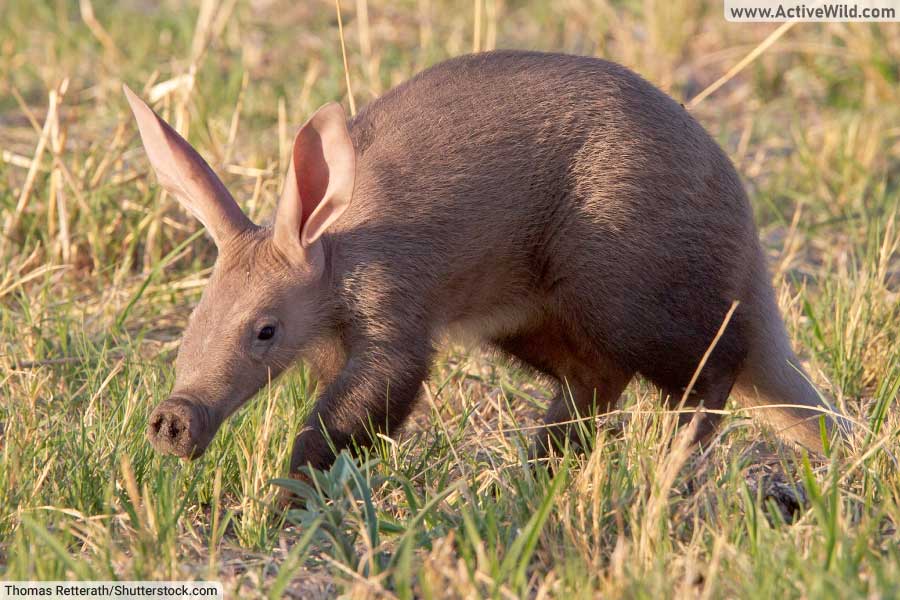
Scientific name: Orycteropus afer
Type of animal: Mammal
Family: Orycteropodidae
Where found: Africa
Conservation status: Least Concern
The aardvark is a nocturnal mammal found in Africa south of the Sahara Desert. This weird-looking animal has a long snout, large ears, and a thick tail; all of which are adaptations for a fossorial (burrowing) lifestyle.
The aardvark is a specialized digger. It uses its powerful claws to burrow into the ground in search of its favorite food: ants and termites. It will also burrow in order to escape predators, and can dig a 2 ft deep hole in under 30 seconds.
The species has a keen sense of smell, which it uses to locate its prey. It captures its insect food with a sticky tongue that can extend up to 30 cm / 12 in.
The aardvark is a solitary animal. It is surprisingly good at swimming and an extremely fast runner.
Discover More With Active Wild
You can find out more about this animal on this page: Aardvark Facts
You can see more African animals on this page: African Animals
Atretochoana Eiselti

Scientific name: Atretochoana Eiselti
Type of animal: Amphibian
Family: Typhlonectidae
Where found: South America
Conservation status: Unassessed
Caecilians are a group of amphibians with snake-like, limbless bodies. All caecilians are weird animals, but Atretochoana Eiselti, is one of the weirdest.
Found in the Amazon basin, Atretochoana Eiselti grows up to 75 cm / 30 in. long and resembles a huge earthworm with a flat head, small eyes, and ringed body.
This bizarre rainforest animal obtains oxygen through its skin, and is the world’s largest lungless vertebrate.
Little is known about Atretochoana Eiselti, but the species is believed to be a burrowing predator that feeds on small invertebrates.
Discover More With Active Wild
You can see more South American animals on this page: South American Animals
You can find out more about amphibians on this page: Amphibians - The Ultimate Guide
Axolotl

Scientific name: Ambystoma mexicanum
Type of animal: Amphibian
Family: Ambystomatidae
Where found: North America (Mexico)
Conservation status: Critically Endangered
The axolotl is a species of salamander native to Mexico. It has a weird ability to regenerate lost body parts, such as limbs and even parts of the spinal cord. The axolotl is much-studied by scientists due to its regenerative capabilities.
The alien-looking axolotl has feather-like gills protruding from the sides of its head. Unlike many amphibians, it does not undergo metamorphosis, and remains fully aquatic even in adulthood.
Although the axolotl is a popular pet, it is extremely rare in the wild, and has the conservation status "Critically Endangered".
Discover More With Active Wild
You can find out more about this animal on this page: Axolotl Facts
You can find out more about amphibians on this page: Amphibians - The Ultimate Guide
You can see more critically endangered animals on this page: Critically Endangered Animals List
Aye-Aye
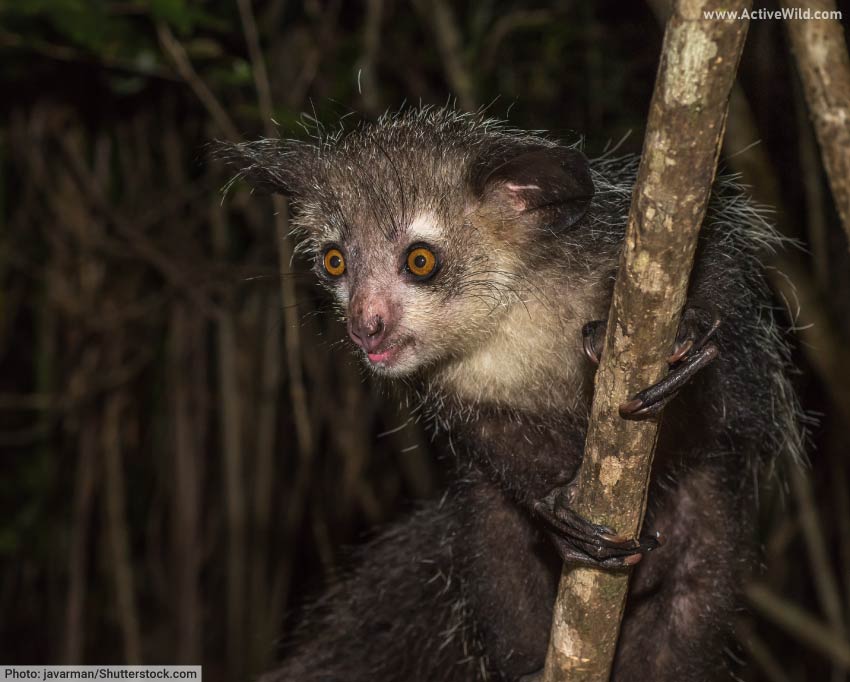
Scientific name: Daubentonia madagascariensis
Type of animal: Mammal
Family: Daubentoniidae
Where found: Africa (Madagascar)
Conservation status: Endangered
Lemurs are a group of primates found only on the African island country of Madagascar. The aye-aye is without doubt one of the weirdest lemurs, due to its bizarre appearance and the way in which it finds food.
The aye-aye is nocturnal and primarily arboreal (tree-dwelling). It has a pointed face with large, orange eyes and large ears. It is around 60 cm / 2 ft. tall, with a tail longer than its body, and is the world's largest nocturnal primate.
Locals believe that bad luck will befall anyone caught in the aye-aye’s gaze!
The aye-aye finds food using echolocation. It taps on tree trunks with a specialized middle finger; from the sound of the taps, it can tell if there is an insect larva buried under the bark.
Once prey has been located, the aye-aye uses its sharp teeth to gnaw a hole in the wood and its long, thin fingers to extract the insect.
Discover More With Active Wild
You can find out more about this animal on this page: Aye-Aye Facts
You can see more nocturnal animals on this page: Nocturnal Animals List with Pictures & Facts
Bat-Eared Fox
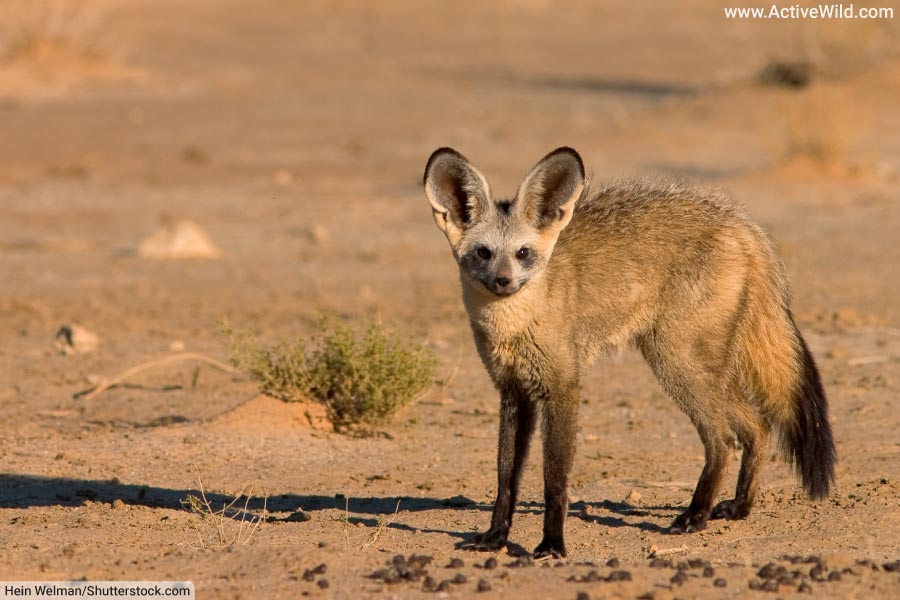
Scientific name: Otocyon megalotis
Type of animal: Mammal
Family: Canidae
Where found: Africa
Conservation status: Least Concern
The bat-eared fox is a small, nocturnal canid (member of the dog family, Canidae) found in the savannas and grasslands of Africa. Its extraordinarily large ears, which can grow up to 13 cm / 5.12 inches in length, are used to locate insects – the weird-looking fox’s favorite food – in the ground.
The bat-eared fox is a social animal that lives in groups of up to 15 individuals led by a dominant breeding pair.
Discover More With Active Wild
You can see EVERY species of dog on this page: Wild Dog Species List with Pictures and Facts
You can see more African animals on this page: African Animals
Blue Sea Dragon

Scientific name: Glaucus atlanticus
Type of animal: Mollusk
Family: Glaucus atlanticus
Where found: Temperate and Tropical Waters Worldwide
Conservation status: Unassessed
The blue sea dragon, also known as the blue sea slug or Glaucus Atlanticus, belongs to a group of gastropod mollusks known as “sea slugs”. Found in the Atlantic and Pacific oceans, it has a distinctive blue and silver coloration, which acts as camouflage against the water's surface.
Blue sea dragons are predators that feed on venomous creatures such as jellyfish and Portuguese man o' war. They store the venom from their prey and use it as a defense mechanism against potential predators.
Discover More With Active Wild
Discover different types of mollusks on this page: Mollusks Examples
You can see more ocean animals on this page: Ocean Animals List with Pictures & Facts
Chinese Water Deer
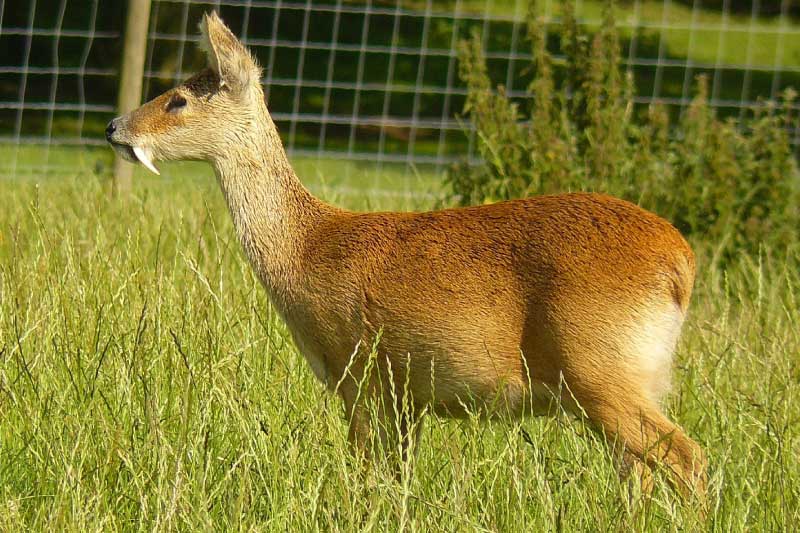
Scientific name: Hydropotes inermis
Type of animal: Mammal
Family: Cervidae
Where found: Asia
Conservation status: Vulnerable
The Chinese water deer is a small deer native to China and Korea. This weird mammal looks like a vampire, with a pair of long, sharp canine teeth protruding from its mouth. It is the only species of deer without antlers.
This Asian cervid (member of the deer family, Cervidae) is an excellent swimmer and well-adapted to aquatic habitats, being equipped with webbed feet and a waterproof coat. Males mark their territory with scent glands located near their eyes.
The Chinese water deer is a solitary animal and most active at dawn and dusk. Whether or not it likes garlic is unconfirmed.
Discover More With Active Wild
You can see more deer on this page: Animals With Antlers
You can see more Asian animals on this page: Asian Animals
Christmas Tree Worm

Scientific name: Spirobranchus giganteus
Phylum: Annelida
Family: Serpulidae
Where found: Tropical oceans worldwide
The Christmas tree worm is a type of marine worm found in tropical waters around the world.
This weird invertebrate has a distinctive appearance, with a tube-like body and two spirals of feathery branches.
The branches are used for feeding, filtering plankton from the water, and also for respiration.
Christmas tree worms quickly retract their branches into their tube-like bodies when threatened.
Discover More With Active Wild
Discover more invertebrates on this page: List Of Invertebrates
You can see more ocean animals on this page: Ocean Animals List with Pictures & Facts
Dumbo Octopus
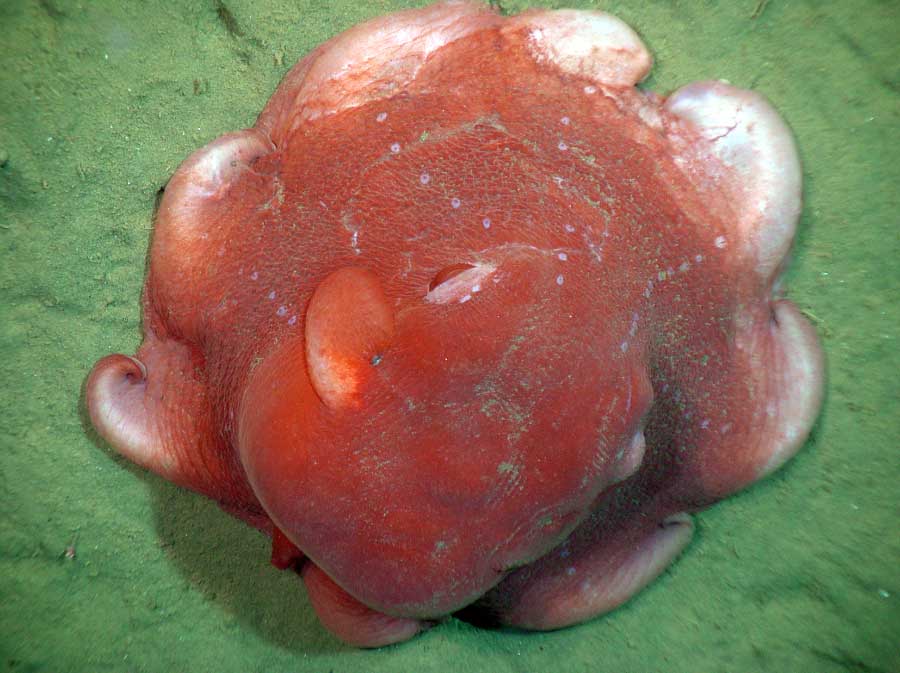
Genus: Grimpoteuthis
Type of animal: Mollusk
Family: Opisthoteuthidae
Where found: deep sea habitats worldwide
Dumbo octopuses are a genus of deep-sea octopuses found at depths of between 1 and 7 km / 0.6 to 4.35 miles – deeper than any other octopuses. They have a unique appearance, with a large, rounded head and two ear-like fins that resemble the ears of the Disney character Dumbo.
Dumbo octopuses lack the ability either to squirt ink or to change color. They hunt by trapping prey (worms, small crustaceans, and other invertebrates) in the webbing between their eight legs.
Discover More With Active Wild
Discover different types of mollusks on this page: Mollusks Examples
Discover more invertebrates on this page: List Of Invertebrates
Echidna
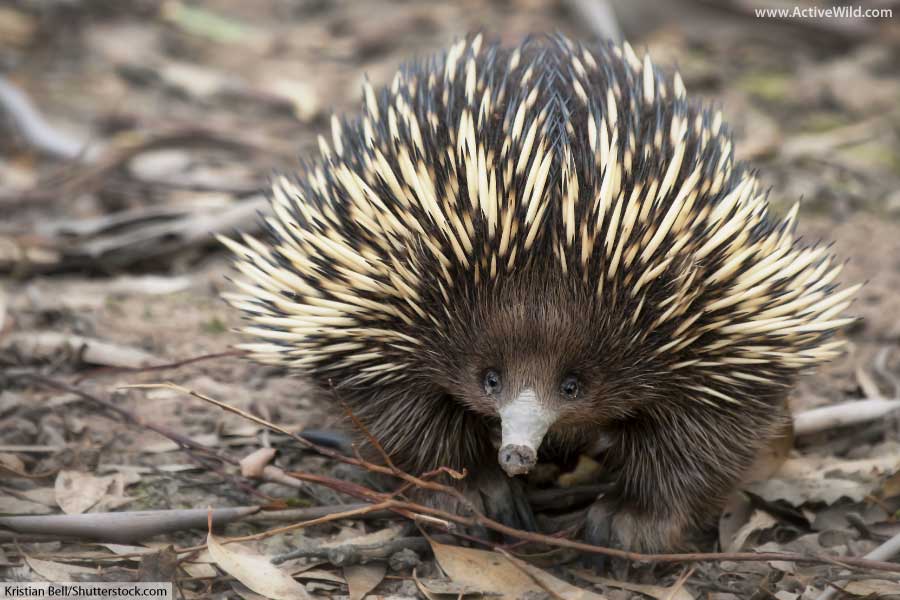
Type of animal: Mammal
Family: Tachyglossidae
Where found: Australia and New Guinea
An echidna, also known as a spiny anteater, is a type of monotreme mammal native to Australia and New Guinea.
Monotremes are among the weirdest of all mammals, as they lay eggs instead of giving birth to their young. There are only five monotremes: four echidnas and the platypus – another weird animal, which we’ll meet below.
Echidnas have a distinctive appearance, with long snouts, spiny coats, and clawed feet.
Of the four living species of echidna, one is of the “short-beaked” variety; the other three are “long-beaked”. Each of the four species is listed below with its respective conservation status and the region in which it is found.
Short Beaked Echidna
- Short-Beaked Echidna Tachyglossus aculeatus - Australia and New Guinea - Least Concern
Long Beaked Echidnas
- Western long-beaked echidna Zaglossus bruijni - New Guinea - Critically Endangered
- Sir David's long-beaked echidna Zaglossus attenboroughi - New Guinea - Critically Endangered
- Eastern long-beaked echidna Zaglossus bartoni - New Guinea - Vulnerable
The short-beaked echidna is primarily insectivorous, using its long, sticky tongue to catch ants and termites. The long-beaked echidnas feed mainly on earthworms.
Discover More With Active Wild
You can find out more about this animal on this page: Echidna Facts
You can see more Australian animals on this page: Australian Animals
Giant Isopod

Scientific name: Bathynomus
Type of animal: Crustacean
Family: Cirolanidae
Where found: Deep-sea habitats worldwide
Giant isopods are large crustaceans found in deep-sea waters around the world. These large invertebrates have a distinctive appearance, with flat, oval-shaped bodies and seven pairs of legs. Additional appendages are used for respiration and swimming.
These weird sea animals look like overgrown woodlice, which is unsurprising, because that’s (kind of) what they are; both they, and the woodlice you might find in your backyard, belong to the invertebrate order Isopoda.
Giant isopods are scavengers, feeding on dead or decaying animals that sink to the ocean floor. They can survive for long periods without food; over five years in the case of one captive individual.
Discover More With Active Wild
You can find out more about crustaceans on this page: Crustaceans – The Ultimate Guide
You can see more ocean animals on this page: Ocean Animals List with Pictures & Facts
Glass Frog

Type of animal: Amphibian
Family: Centrolenidae
Where found: Central and South America
Glass frogs are a family (Centrolenidae) of small frogs found in Central and South America. Glass frogs have a unique appearance, with transparent skin that allows their internal organs to be visible from the outside.
Currently, 157 species of glass frogs are recognized. (source)
Glass frogs are primarily arboreal, living in trees and shrubs near streams and rivers. The frogs attach their eggs onto plants that overhang a body of water. When the eggs hatch, the tadpoles fall into the water, where they continue their development.
Discover More With Active Wild
You can find out more about amphibians on this page: Amphibians - The Ultimate Guide
You can see more South American animals on this page: South American Animals
Goblin Shark
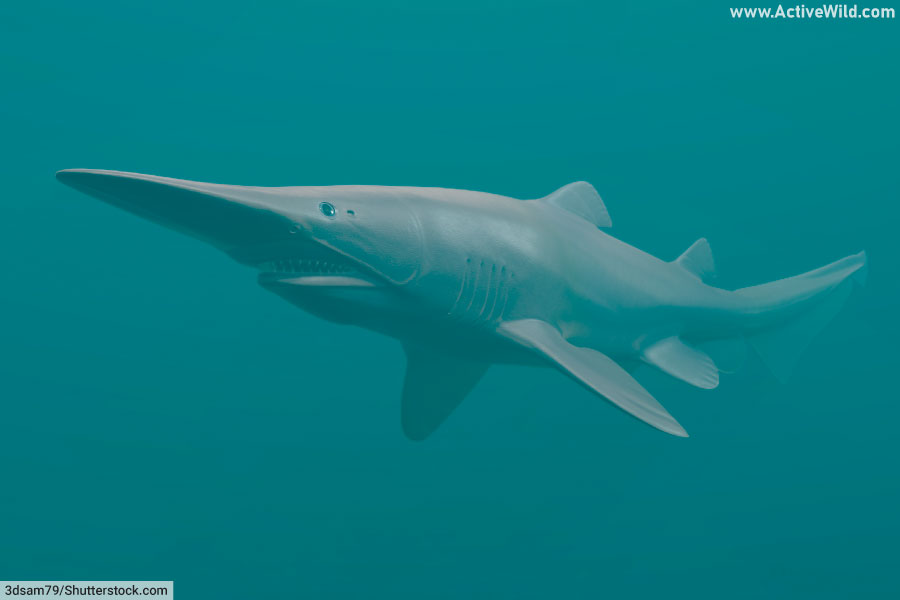
Scientific name: Mitsukurina owstoni
Type of animal: Fish
Family: Mitsukurinidae
Where found: Deep sea habitats worldwide
Conservation status: Least Concern
The goblin shark is one of the world’s weirdest sharks. The species’ name comes from its distinctive looks; its long, protruding snout and needle-like teeth gives it a goblin-like appearance.
The goblin shark is an opportunistic feeder, using its long snout to detect and capture prey in the dark waters of the deep sea.
This deep-sea species is the only member of the family Mitsukurinidae, and is found in deep-sea waters around the world.
Discover More With Active Wild
Find out more about sharks on this page: Shark Facts
Discover different types of sharks on this page: Types of Sharks
Hammer-Headed Bat
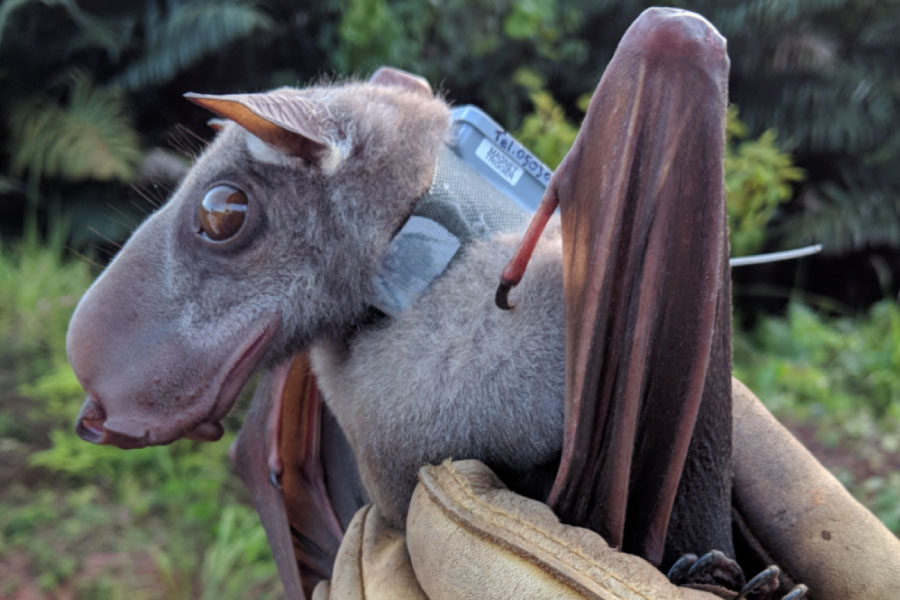
Scientific name: Hypsignathus monstrosus
Type of animal: Mammal
Family: Pteropodidae
Where found: Africa
Conservation status: Least Concern
Bats are quite a weird-looking group of animals. Due to their unique nocturnal, insect-catching behavior, many bats have unusual features, including extended noses or overlarge ears.
One of the weirdest bats is the hammer-headed bat, a species of fruit bat found in Africa. While the female of the species looks fairly normal, the male has a huge, box-like face and large lips. The male’s bulbous large head serves to amplify its mating calls.
Hammer-headed bats are mainly frugivorous (fruit-eating).
Discover More With Active Wild
You can find out more about bats on this page: Bats – The Ultimate Guide
You can see more African animals on this page: African Animals
Hoatzin

Scientific name: Opisthocomus hoazin
Type of animal: Bird
Family: Opisthocomidae
Where found: South America
Conservation status: Least Concern
The hoatzin, also known as the stinkbird, is a weird bird found in South America’s Amazon and Orinoco basins.
The stinkbird has a distinctive appearance, with a spiky crest on its head and a patch of blue skin surrounding its eyes – but that’s not the only reason it has been included in this list of weird animals.
The hoatzin’s unpleasant nickname comes from the odor produced as a by-product of its unusual digestive system, in which leaves are fermented in a special area of its throat. No other bird digests its food in such a manner.
As if that weren’t enough, unlike nearly all other birds, infant hoatzins have claws on their wings that help them to climb back into the nest if they fall out.
This unique species is the only member both of the family, Opisthocomidae, and the order, Opisthocomiformes.
Discover More With Active Wild
You can see more animals that live in the Amazon Rainforest on this page: Amazon Rainforest Animals
You can see more rainforest animals on this page: Rainforest Animals List with Pictures & Facts
Japanese Spider Crab
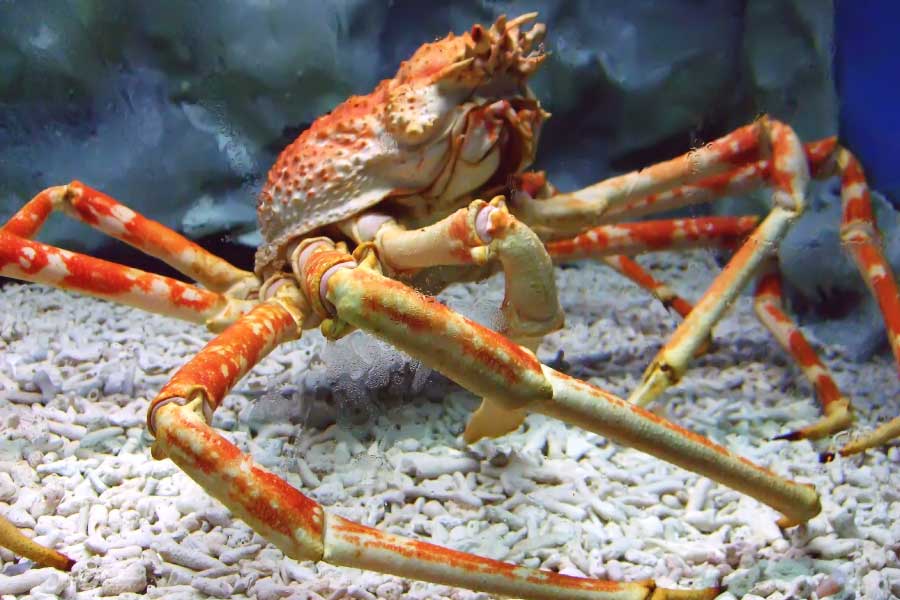
Scientific name: Macrocheira kaempferi
Type of animal: Crustacean
Family: Inachidae
Where found: Pacific Ocean
Conservation status: Unassessed
The Japanese spider crab is both the world’s largest crab and the second-heaviest arthropod. Its leg-span measures a huge 3.7 m (12.1 ft), and an individual can weigh from 16 to 20 kg. (The world's heaviest arthropod is the American lobster, Homarus americanus.)
This weird crustacean has long, spindly legs and a wide, flat body. It is primarily a scavenger, feeding on dead or decaying animals on the ocean floor. The species is known for its longevity, with some individuals living up to 100 years.
Japanese spider crabs are found in the seas around Japan.
Discover More With Active Wild
You can find out more about crustaceans on this page: Crustaceans – The Ultimate Guide
You can find out more about arthopods on this page: Arthropods Examples
You can see more ocean animals on this page: Ocean Animals List with Pictures & Facts
Maned Wolf
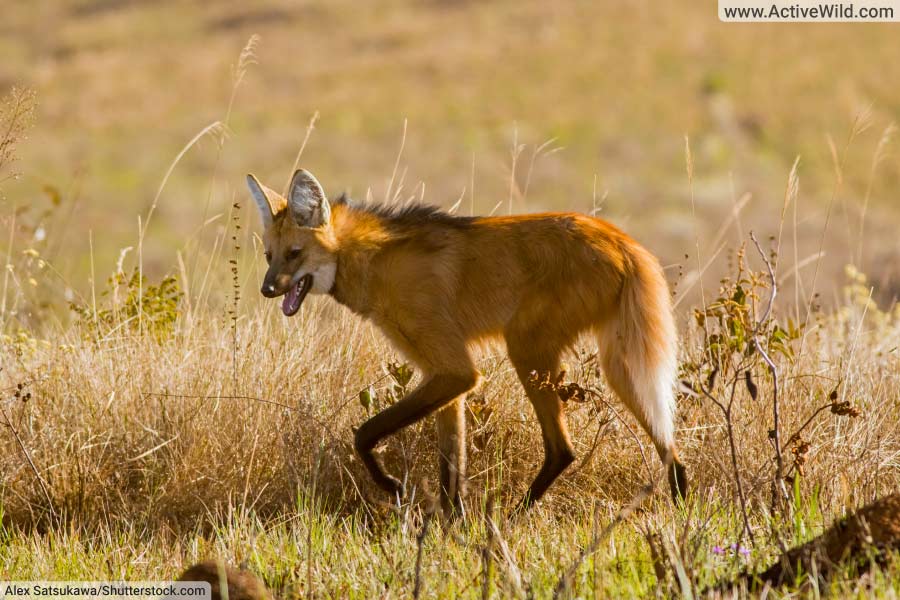
Scientific name: Chrysocyon brachyurus
Type of animal: Mammal
Family: Canidae
Where found: South America
Conservation status: Near Threatened
The maned wolf is a type of canid (member of the dog family, Canidae) found in grasslands in South America. The species has long, slender legs, reddish-brown coat and shaggy mane, and is included in this list due to its weird, long-legged appearance.
Unlike its namesake the gray wolf, the maned wolf does not live in packs. It is an omnivore, hunting a variety of small to mid-sized animals and also eating plant matter, including a plant named the wolf apple Solanum lycocarpum – due to the maned wolf’s liking for its fruit.
Discover More With Active Wild
You can see EVERY species of dog on this page: Wild Dog Species List with Pictures and Facts
You can see more South American animals on this page: South American Animals
You can see more animals that live in grasslands on this page: Grassland Animals
Mata Mata
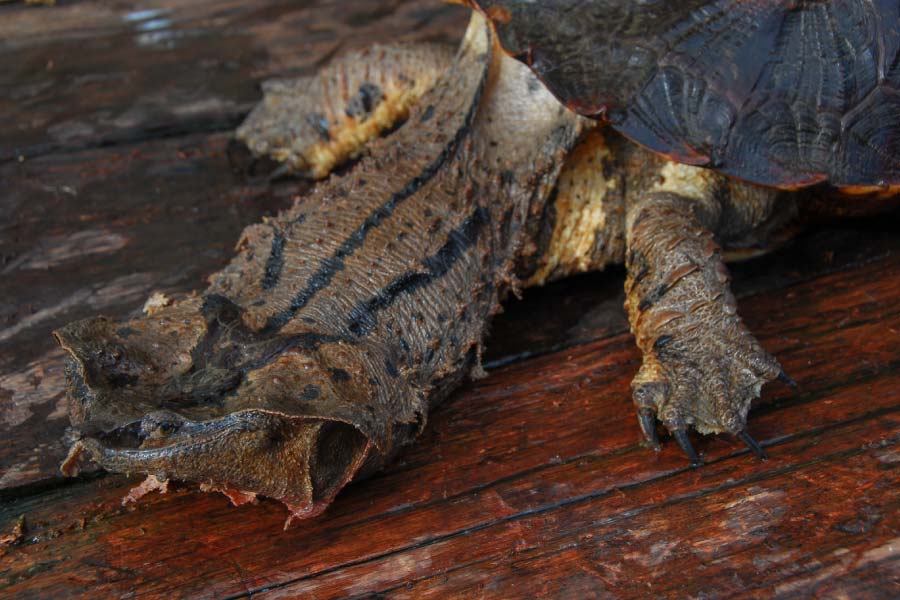
Scientific name: Chelus fimbriata
Type of animal: Reptile
Family: Chelidae
Where found: South America
Conservation status: Least Concern
The mata mata is a species of freshwater turtle found in the Amazon and Orinoco Basins in South America.
This South American reptile has a bizarre appearance. Its shell is almost 1 meter in length, and both it, and the animal’s exposed skin, are heavily ridged. The species’ long neck and large head have a flattened appearance. In addition, the turtle has a long, spike-like nose.
With its ridged shell and bumpy skin, the mata mata resembles a piece of floating bark, camouflaging the reptile from both predators and prey. It can remain motionless for long periods.
The mata mata is primarily carnivorous, feeding on invertebrates and fish, and (occasionally) on other small vertebrates.
Discover More With Active Wild
Discover more rainforest reptiles on this page: Rainforest Reptiles List with Pictures & Facts
You can see more rainforest animals on this page: Rainforest Animals List with Pictures & Facts
Naked Mole Rat
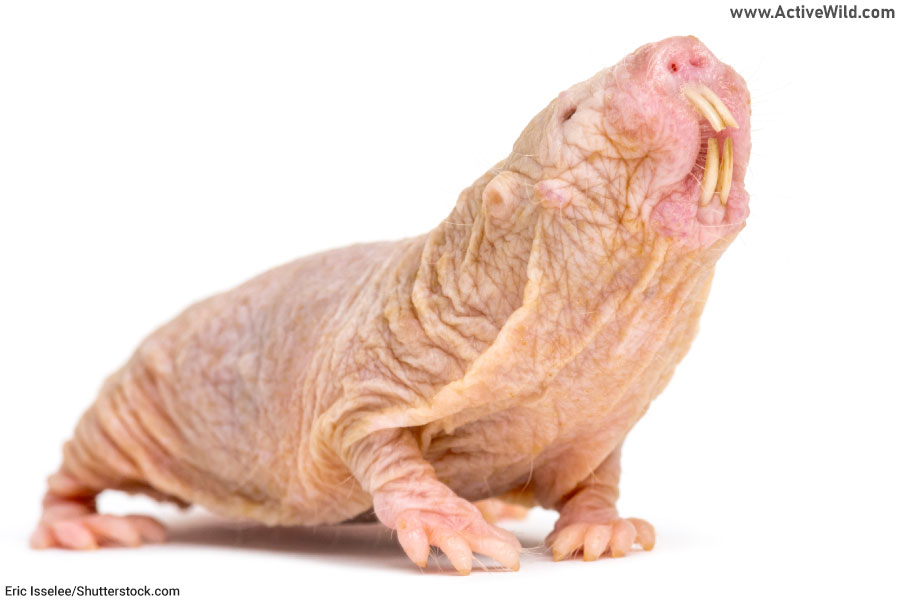
Scientific name: Heterocephalus glaber
Type of animal: Mammal
Family: Heterocephalidae
Where found: Africa
Conservation status: Least Concern
One of the world’s weirdest rodents is the naked mole rat, a species found in the grasslands of eastern Africa.
Famed for its bizarre appearance, the naked mole rat has wrinkled, hairless skin and large, protruding teeth.
Naked mole rats live underground in large colonies consisting of a queen and numerous worker rats. This type of social living, which resembles that seen in bee and ant colonies, is known as eusociality.
These strange rodents are known for their ability to live in low-oxygen habitats, and have been recorded as being able to survive 18 minutes in an atmosphere that lacks oxygen entirely.
Discover More With Active Wild
You can see more ugly animals on this page: Ugly Animals List with Pictures & Facts
You can see more African animals on this page: African Animals
Narwhal
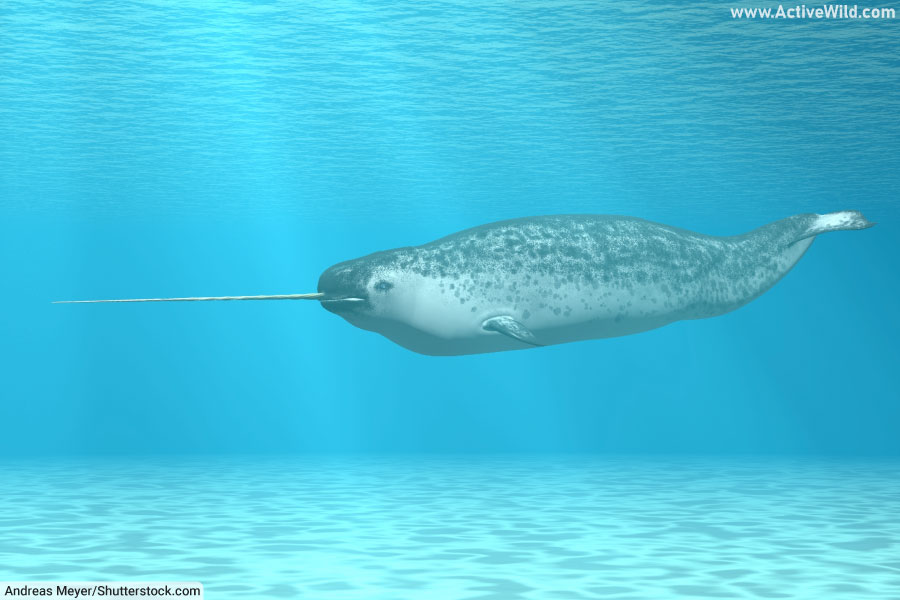
Scientific name: Monodon monoceros
Type of animal: Mammal
Family: Monodontidae
Where found: Arctic Ocean
Conservation status: Least Concern
The narwhal is a type of toothed whale found in the Arctic Ocean. It has a distinctive appearance, with a long, spiral tusk that can grow up to 10 ft. / 3 meters in length. Only male narwhals have tusks, which are an extension of the upper left canine tooth.
Narwhals are primarily carnivorous, feeding on fish, squid, and other small aquatic animals. They are also known for their ability to navigate through thick sea ice, using their tusks to break through the ice to breathe.
The narwhal belongs to the family Monodontidae, which contains just one other living species: the beluga whale.
Discover More With Active Wild
You can find out more about this animal on this page: Narwhal Facts
You can see more Arctic animals on this page: Arctic Animals
Okapi
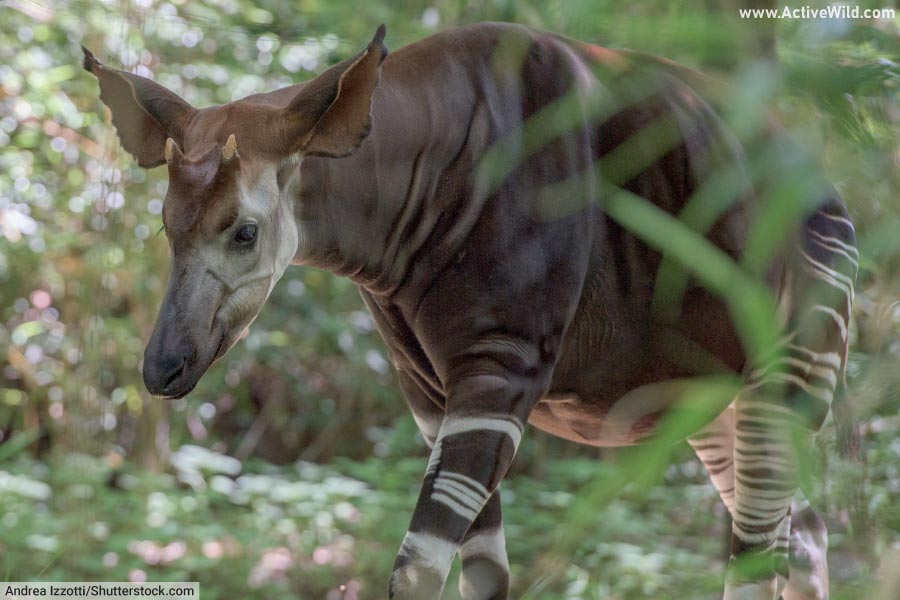
Scientific name: Okapia johnstoni
Type of animal: Mammal
Family: Giraffidae
Where found: Africa
Conservation status: Endangered
The okapi is a type of ungulate (hoofed mammal) found in forests in Central Africa. The species has a unique appearance, with zebra-like stripes on its legs and a long, prehensile tongue that can reach up to 18 in. / 46 cm in length.
The animal’s weird markings provide camouflage against predators in the forest habitat in which it is found. The species’ main predator is the leopard.
The okapi’s closest relative is the giraffe; the two animals are the only members of the giraffe family, Giraffidae.
The okapi is primarily herbivorous, feeding on leaves, fruits, and other vegetation. A rare and endangered animal, the okapi is seldom seen in the wild.
Discover More With Active Wild
You can find out more about this animal on this page: Okapi Facts
You can see more forest animals on this page: Forest Animals
Pangolin
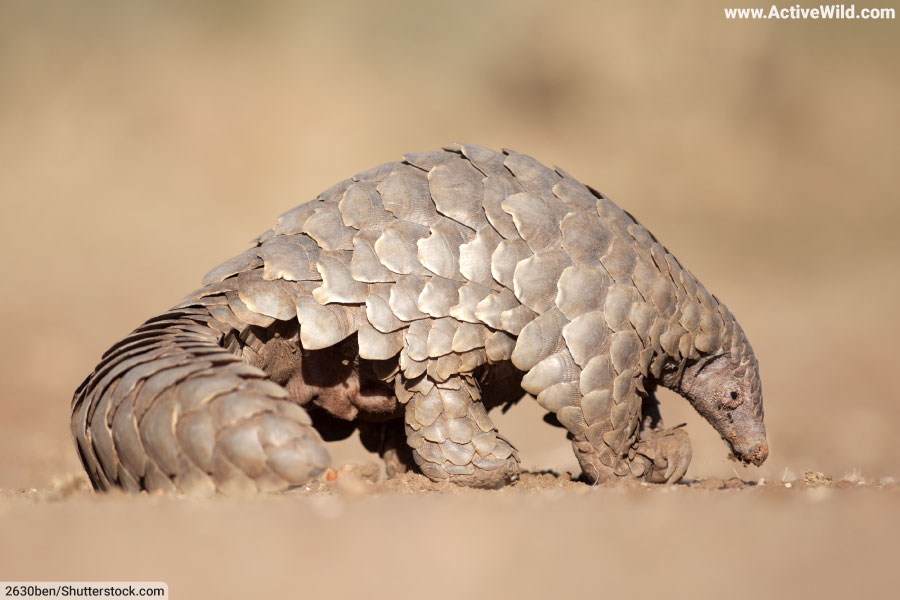
Type of animal: Mammal
Family: Manidae
Where found: Africa, Asia
Pangolins are a group of small to mid-sized mammals with unique, scaly skins. The scales are made of keratin – the same natural substance out of which our fingernails are made.
Pangolins are primarily insectivorous, feeding on ants, termites, and other small insects. Their tongues are sticky and extremely long – those of larger pangolin species can reach up to 16 inches / 40.6 cm in length.
The pangolins' scaly skin and insect-based diet give them the alternative name of scaly anteaters.
Pangolins are known for their ability to curl up into a tight ball when threatened, with their scaly exterior providing protection from predators.
There are eight different pangolin species. Together, they make up the family Manidae, the only family in the order Pholidota.
Discover More With Active Wild
You can see more African animals on this page: African Animals
You can see more Asian animals on this page: Asian Animals
Pink Fairy Armadillo

Scientific name: Chlamyphorus truncatus
Type of animal: Mammal
Family: Chlamyphoridae
Where found: South America (Argentina)
Conservation status: Data Deficient
The pink fairy armadillo is a type of armadillo found only Argentina. With a maximum length of around 11.5 cm / 4.5 in, is it the world’s smallest armadillo species. it has a pink, armored shell and a long, pointed snout. It lives in dry, grassy plains and dunes.
Pink fairy armadillos are primarily nocturnal, burrowing underground during the day to escape the heat.
Discover More With Active Wild
You can see more South American animals on this page: South American Animals
Discover different types of mammals on this page: Types of Mammals
Platypus

Scientific name: Ornithorhynchus anatinus
Type of animal: Mammal
Family: Ornithorhynchidae
Where found: Australia
Conservation status: Near Threatened
No list of weird animals would be complete without the platypus, an animal so strange that early scientists didn’t believe that it was real. (When presented with a preserved platypus sent to them from Australia, scientists at a British museum thought that the specimen was several different animals that had been sewn-together.)
The platypus is found only in eastern Australia. It has a bizarre appearance, with a bill like a duck, webbed feet like an otter, and a beaver-like tail.
Platypuses are primarily carnivorous, feeding on insects, crustaceans, and small fish. They are able to detect electrical fields produced by their prey, using electroreceptors in the bill.
As if that wasn’t enough, the platypus is a monotreme – an egg-laying mammal, one of only five such animals alive. (The four other monotremes are all echidnas, covered elsewhere in this list of weird animals.)
The male platypus has venomous spines on its rear ankles. A sting from a platypus is excruciatingly painful, but not fatal.
Discover More With Active Wild
You can find out more about this animal on this page: Platypus Facts
You can see more Australian animals on this page: Australian Animals
Red-Lipped Batfish

Scientific name: Ogcocephalus darwini
Type of animal: Fish
Family: Ogcocephalidae
Where found: Pacific Ocean
Conservation status: Least Concern
The red-lipped batfish is a type of fish found in the Pacific Ocean surrounding the Galapagos Islands and off the coast of South America.
There are a lot of weird-looking fish, so it takes a lot for a species to stand out. The red-lipped batfish does so easily, with its bright red lips, eye stalks, and leg-like fins that allow it to walk along the ocean floor.
The red-lipped batfish is primarily carnivorous, feeding on small fish and crustaceans. It attracts its prey with the use of a glowing ball mounted at the tip of a fin that emerges from its head. Weird.
Discover More With Active Wild
You can find out more about fish on this page: Fish – The Ultimate Guide
Discover different types of fish on this page: Types of Fish
Saiga Antelope
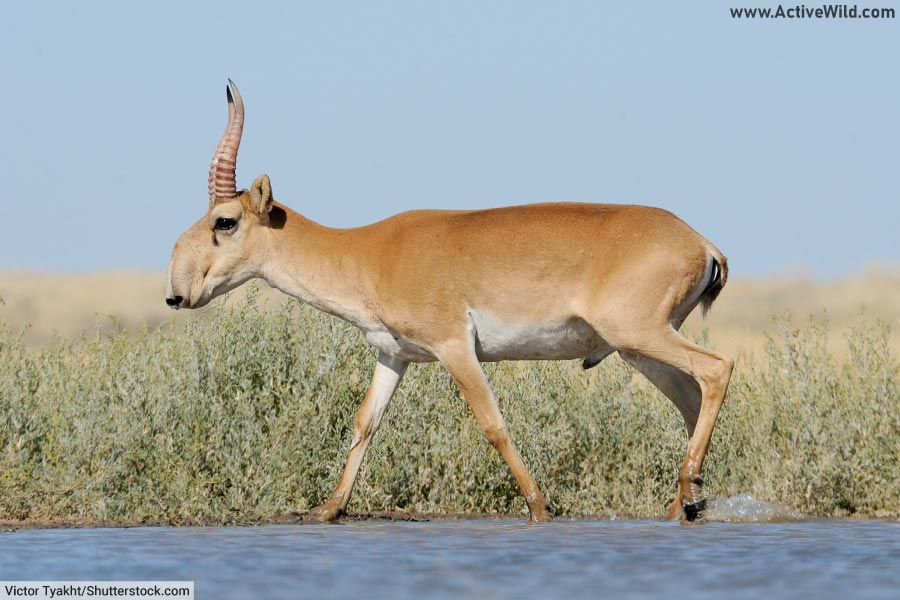
Scientific name: Saiga tatarica
Type of animal: Mammal
Family: Bovidae
Where found: Asia
Conservation status: Critically Endangered
One of the world’s weirdest-looking land mammals is the saiga antelope, a species found in the grasslands of Central Asia.
The saiga antelope is unmistakable with its long, bulbous nose. This unique feature is an adaption for living in dry grasslands; during the winter, air is heated up in the nose before entering the lungs. During the summer, the nose cools the animal and filters dust from the air.
Saiga antelopes are primarily herbivorous, feeding on grasses and other vegetation. They are also known for their migratory behavior, with herds traveling long distances each year to find food and water.
Discover More With Active Wild
You can see more horned animals on this page: Animals With Horns
You can see more animals that live in grasslands on this page: Grassland Animals
Shoebill
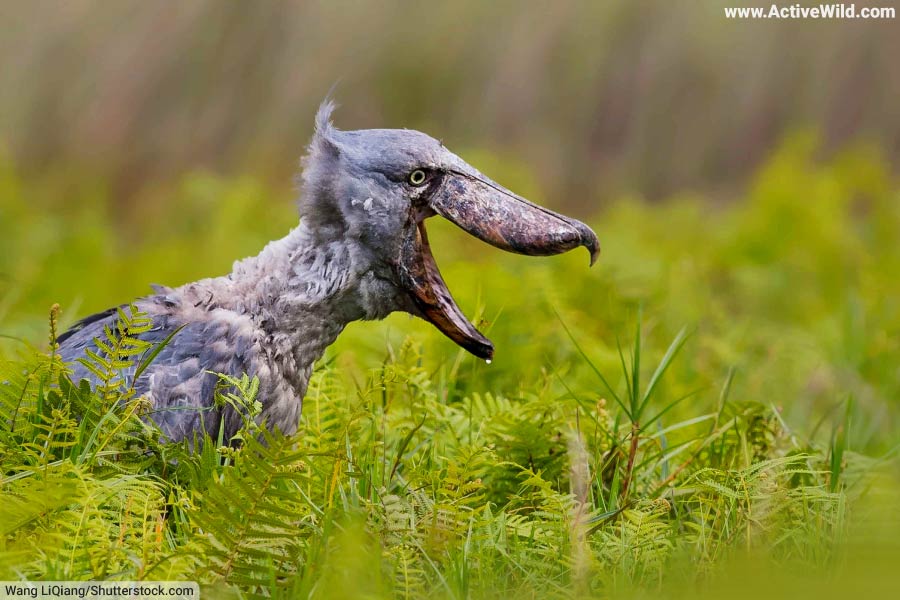
Scientific name: Balaeniceps rex
Type of animal: Bird
Family: Balaenicipitidae
Where found: Africa
Conservation status: Vulnerable
The shoebill is a large wading bird found in freshwater swamps in East Africa. The species has a unique appearance, with a large, shoe-like bill and a tall, flat crest on its head.
Shoebills are primarily piscivorous, feeding on fish, eels, and other aquatic animals. They are known for their slow movements and patient hunting behavior, standing still for long periods before striking at their prey.
If you’re not quite sold on the whole birds-are-dinosaurs evolutionary theory, then take a look at the shoebill; this weird, prehistoric-looking species might just change your mind!
Discover More With Active Wild
You can find out more about birds on this page: Birds – The Ultimate Guide
Discover different types of birds on this page: Types of Birds
Star-Nosed Mole
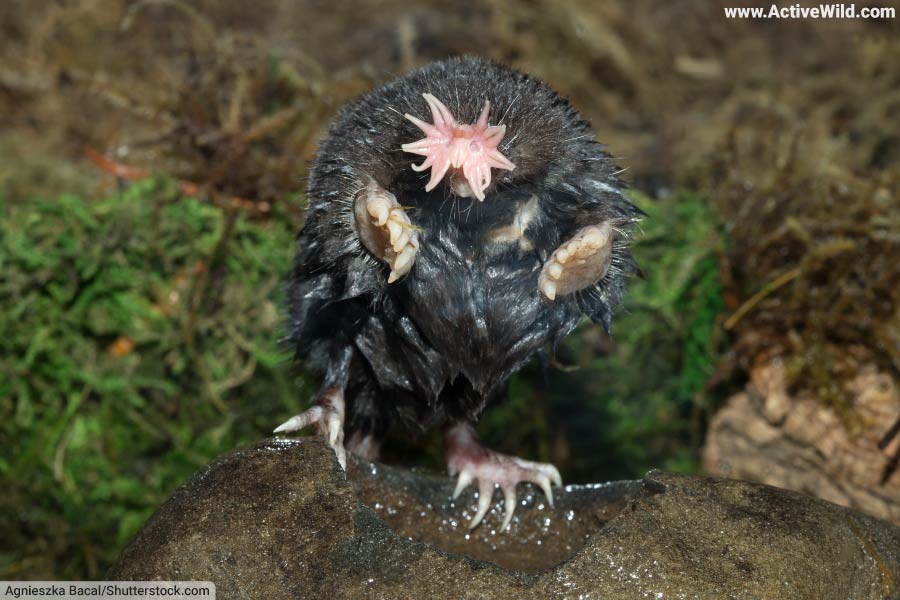
Scientific name: Condylura cristata
Type of animal: Mammal
Family: Talpidae
Where found: North America
Conservation status: Least Concern
When you live in the pitch darkness of underground tunnels and are virtually blind, good looks aren’t high in your list of evolutionary priorities. Which explains the bizarre appearance of the star-nosed mole.
This strange burrowing mammal has a star-shaped nose made up of 22 fleshy, pink tentacles. This extremely sensitive organ helps the mole to navigate and find prey in its underground world.
The species is primarily insectivorous, feeding on earthworms, insects, and other small invertebrates.
Discover More With Active Wild
You can see more North American animals on this page: North American Animals
Tasmanian Devil
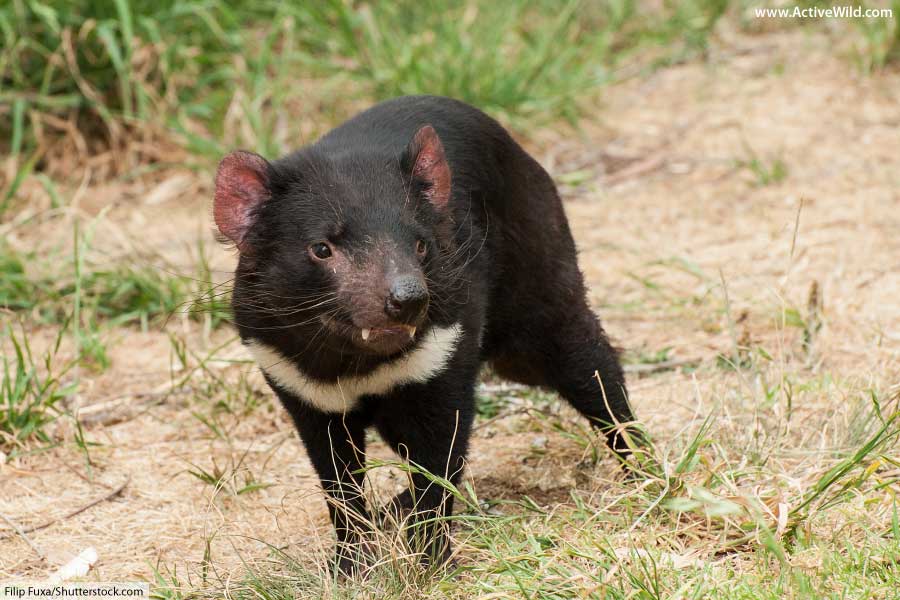
Scientific name: Sarcophilus harrisii
Type of animal: Mammal
Family: Dasyuridae
Where found: Australia
Conservation status: Endangered
The Tasmanian devil is an endangered species of carnivorous marsupial found in Australia. It inhabits the island state of Tasmania. Recently, a small number of devils was released into a sanctuary on mainland Australia.
The Tasmanian devil has a stocky build, powerful jaws, and sharp teeth, and is known for its aggressive behavior when threatened or feeding.
Tasmanian devils are primarily scavengers, feeding on carrion and small prey such as insects, reptiles, and small mammals. They are known for their distinctive vocalizations, including growling, screeching, and screaming.
The Tasmanian devil is an endangered species due to an illness that, over the last two decades, has swept through much of the population.
Discover More With Active Wild
You can find out more about this animal on this page: Tasmanian Devil Facts
You can see more Australian animals on this page: Australian Animals
Thorny Devil
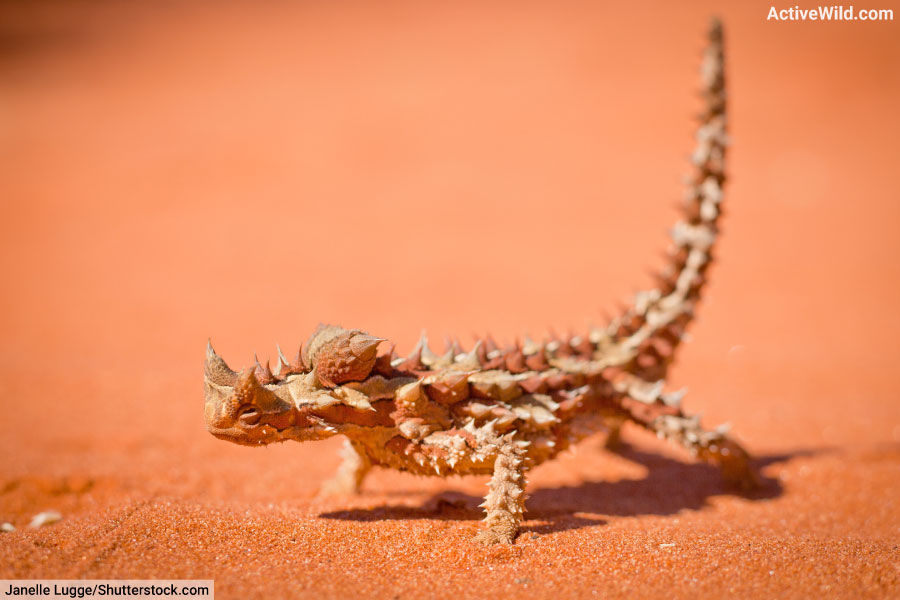
Scientific name: Moloch horridus
Type of animal: Reptile
Family: Agamidae
Where found: Australia
Conservation status: Least Concern
The thorny devil is one of many weird animals found in Australia. This little lizard looks like a miniature dinosaur, with a horned face, spikes on its body, and a false head situated behind its real one. It grows to around 20.3 cm / 8 inches in length.
Thorny devils are primarily insectivorous, feeding on ants and other small insects. The reptile’s ridged skin is an adaption for living in a desert habitat. Using capillary action, dew that has condensed on the animal’s body is transported to its mouth.
Discover More With Active Wild
You can find out more about this animal on this page: Thorny Devil Facts
Discover different types of lizards on this page: Types of Lizards
You can see more ugly animals on this page: Ugly Animals List with Pictures & Facts
Related Pages: Discover More With Active Wild
You can see more weird species on the following pages:
Weird Amphibians Pictures & Facts
Weird Birds Pictures & Facts
Weird Fish Pictures & Facts
Weird Insects Pictures & Facts
Weird Mammals Pictures & Facts
Weird Reptiles Pictures & Facts
Weird Sea Creatures Pictures & Facts
Weird Plants Pictures & Facts
Ugly Animals Pictures & Facts
Become an animal expert: Animals - The Ultimate Guide
Discover more amazing animals from all around the world: A to Z Animals
Find out where different animals live: Animals Around The World


